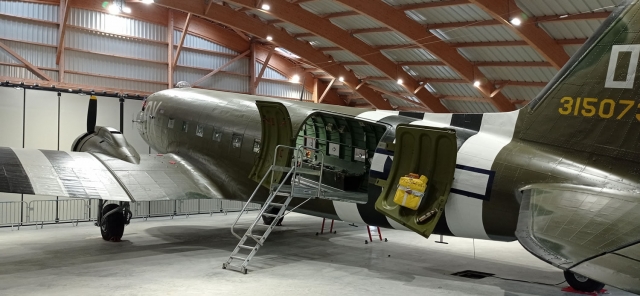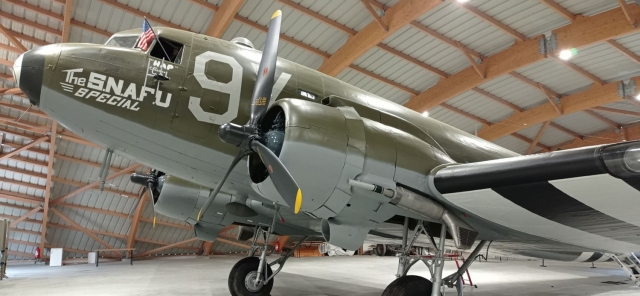On 19 June, veteran Douglas C-47 43-15073, named SNAFU special, will be officially rolled out of its hangar at Merville (France) after a lengthy restoration. The Skytrain was discovered in Bosnia by volunteers of the Association for the Management of the Merville Battery, early in 2007. The Merville Battery itself is a memorial, based on a German artillery installation, part of the Atlantikwal.
Once they had discovered the existence of this plane, and had unveiled her history, the group launched the operation Saving C-47 #43-15073. After initial funding had been found, the French left for Bosnia and started dismantling the vintage Skytrain. They returned to France in December 2007 and brought the transport to the airport of Caen-Carpiquet. From January 2008 the first steps of its restoration were taken and in April of that same year the C-47 was trucked to its final destination, Merville.
In the years that followed the volunteers have done a truly amazing job: the plane has been returned in the actual condition it had on 6 June 1944, a time capsule! Through the static restoration of SNAFU special the people of the Merville Battery have returned the veteran into a lasting memorial of the aerial operations around D-day.
SNAFU special has an intriguing history. It left the Douglas factory in Long Beach (CA) as msn 19539 on 29 January 1944 and became USAAF 43-15073. Assigned to the 9th US Army Air Force, she crossed the Atlantic and arrived in the United Kingdom via West Africa. As part of the 440st Troop Carrier Group she took part in multiple exercises in support of the American Expeditionary Corps, in preparation for the invasion along the coast of Normandy.
On 6th June she crossed the channel towards the Cotentin Peninsula and dropped paratroopers of the 501st Parachute Infantry Regiment (101st Airborne Division) south of Sainte-Mere- Eglise. Throughout the battle of Normandy she flew supply sorties using temporary landing strips, returning to the UK with wounded soldiers.
 In August 1944 she took part in operations in the Provence, in September she carried men of the 82nd Airborne Division to Nijmegen to capture the bridge that led to Arnhem, during Operation Marker Garden, immortalised in the Film A Bridge Too Far. She was hit several times by enemy fire. Some months later on 27 December 1944, riddled by flak, she and her crew were very nearly lost.
In August 1944 she took part in operations in the Provence, in September she carried men of the 82nd Airborne Division to Nijmegen to capture the bridge that led to Arnhem, during Operation Marker Garden, immortalised in the Film A Bridge Too Far. She was hit several times by enemy fire. Some months later on 27 December 1944, riddled by flak, she and her crew were very nearly lost.
At the end of the war the aircraft was sold to a Czechoslovakia and became a civilian airliner. The Dak was then purchased by the Armée de l’Air (French Air Force) in March 1960 but sold again in 1973, this time to the Yugoslavian army. At a base near Sarajevo, where she was used for many years as static instructional airframe, she was machine-gunned during the war that engulfed the Balkans but luckily survived the conflict.
Source and photos: Musee de la Batterie de Merville


